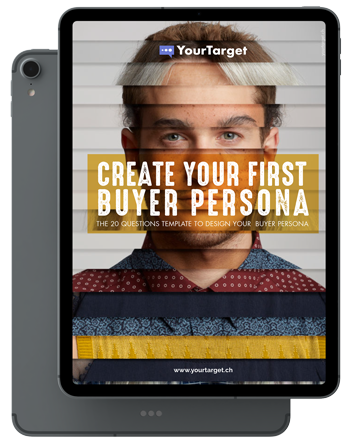LinkedIn is the world’s most trusted social networking platform. With 55 million businesses using the platform regularly—and 4 out of 5 of them driving business decisions—it’s no surprise that LinkedIn is a top marketing tool for reaching consumers, B2B prospects, and new hires.
When it comes to social selling, LinkedIn is a valuable tool in and of itself. According to research by Hubspot, LinkedIn is 277% more effective for lead generation than other social platforms like Facebook and Twitter. But it’s dedicated premium social selling platform, Sales Navigator, offers a range of features, filters, and tools to make finding and converting your ideal B2B customers much easier.
In this article, we’ll provide an overview of Sales Navigator and some tips on how to use it to find leads on LinkedIn. So, without further ado, let’s get started.
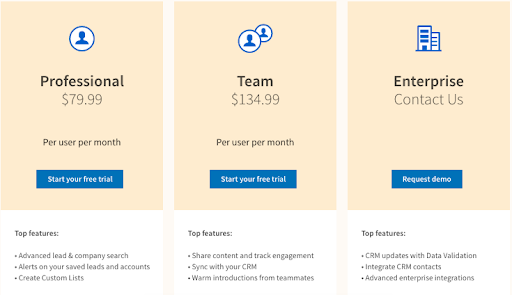
What is Sales Navigator?
First things first, what exactly is Sales Navigator? Put simply, Sales Navigator is LinkedIn’s premium social selling platform. It provides businesses with a range of powerful features to help them find and target the right prospective customers.
Sales Navigator streamlines the lead prospecting process with a range of search filters to help target customers that align with your buyer personas. These features enable businesses to target, understand, and engage with leads while paving the way for more personalized engagement and better relationships.
Who is it for?
What kind of people can benefit from Sales Navigator? If you’re in the B2B sales business, Sales Navigator is a lucrative tool that yields several advantages.
Sales Navigator is available for anyone with a LinkedIn account. LinkedIn Sales Navigator pricing depends on your needs. You can choose from a range of subscriptions including Sales Navigator professional, team, and enterprise. Each model offers access to different features at various price points, so you can choose the best one to suit your business needs.
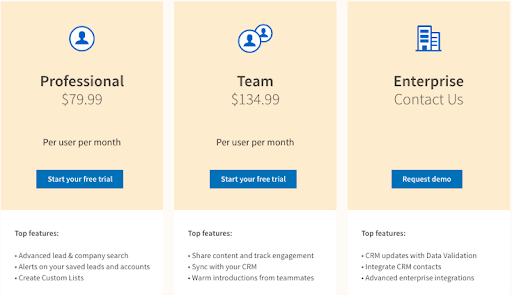
What are the advantages of Sales Navigator?
Before we delve into how to use Sales Navigator for B2B Sales, here’s a quick look at some of its benefits to get you warmed up.
- CRM integrations: Sales Navigator integrates with platforms like HubSpot, Salesforce, Drift, and more to streamline sales pipeline management and enhance productivity.
- Automated lead generation: The Lead Recommendations feature suggests relevant prospects based on your lead preferences. This allows you to reach warm leads that are more likely to engage with your business.
- Advanced search: Sales Navigator allows you to find relevant connections with targeted search filters that can find leads based on things like keywords, location, years of experience, group membership, and more (we’ll get to that later!)
- InMail and smart links: Connect with anyone on LinkedIn—regardless of whether they’re in your network or not—with personalized messages and include links to downloadable resources and documents with smart links.
- Better B2B sales insights: Sales Navigator keeps you updated with any changes regarding people in your network such as job position updates, company updates, and more. This allows you to stay on top of lead generation with a consistent understanding of where your audience is.
How to Find Leads On LinkedIn With Sales Navigator
First of all, you’ll need to have a deep understanding of who your buyer personas are. If you already understand how to use LinkedIn for lead generation, then getting started with Sales Navigator will be a breeze.
You’ll need to understand a few things about your audience, such as what type of content they consume regularly, groups they’re in, influencers they follow, and more. Armed with this information about your target audience, you can fully leverage Sales Navigator’s filters and other features to find your ideal customers.
Let’s take a look at some LinkedIn Sales Navigator for lead generation best practices for B2B sales.
Use the “Advanced Search” feature
The advanced search feature of Sales Navigator is one of its standout functions. With more than 20 advanced filters, Sales Navigator is the ideal tool for marketers searching for qualified leads that are likely to become paying customers.
The advanced search filters vary between those for individuals and companies. People-based search filters include things like keywords, location, job title, company size, interests, years of experience, years in current position, school, and much more.
Company-based advanced search filters include company revenue, company growth, industry, number of followers, headquarters location, and more.
Using the advanced search feature, marketers can narrow down their target audience to relevant leads and connect with them directly. The more you know about your prospects the better you can segment your audience and personalize your communication with them when it comes to outreach.
Save leads and searches
Sales Navigator allows marketers and sales reps to save searches and leads that might already be in their pipeline. This streamlines the search process as leads are displayed in the Sales Navigator news feed which offers a more subdued version of the regular homepage.
When searching, just select the “save search” icon to save the search and pick up where you left off when you begin a new session. You can also stay up to date with any professional changes happening in the life of employees or the company.
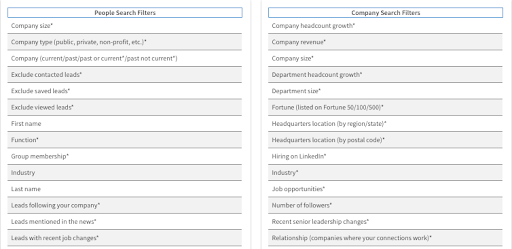
Narrow your search with Sales Spotlights
Sales Spotlights are a great Sales Navigator feature that appears at the top of the search results once you’ve carried out a search and highlighted relevant prospects.
Sales Insights provide a list of relevant prospects based on information you’ve searched for, streamlining the lead generation process by leading you directly to those prospects that are more likely to engage with your business.
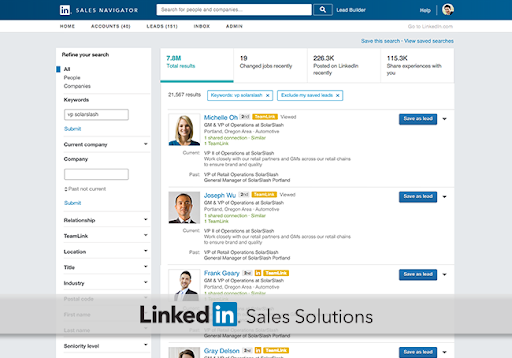
Keep prospects organized with tags and notes
It’s likely that LinkedIn isn’t your only source for B2B sales leads, and most leads require you to communicate or share information with up to six people involved in finalizing the purchase decision.
You’ve got enough on your plate to manage, which is why Sales Navigator offers a tag and note system that makes it simple to identify decision makers, influencers, and any other people involved in the B2B sales process. Keep tabs on all your prospects to manage key accounts and leads.
Reach out to leads via InMail
Arguably the most important moment in the business-to-business relationship is the communication between the sales rep and the lead. This is your first point of contact, so make sure you do it well.
InMail (LinkedIn’s email/direct message feature) is a great way for reps to reach out and connect with leads with personalized messages. Before reaching out, it’s important to remember that customers respond much better to personalized communication. So do a full review of the lead’s profile, any updates, and key information they share before crafting your outreach message.
Make data-driven decisions with Sales Insights
LinkedIn Sales Insights is part of its sales solution and creates a profound data foundation for sales teams to base their decisions on. Sales Insights provides in-depth insight into departments, functions, and accounts to allow teams to build a sales strategy that aligns with wider business goals.
Accurate insights are based on real-time data that accounts for shifting workforce trends (remote work, changing roles, etc) as well as providing your sales team with account information about leads that are most likely to convert to customers.
Ready to Get Started with Sales Navigator?
Setting up with Sales Navigator is simple. You even have the option to start with a LinkedIn Sales Navigator free trial that you can take advantage of for the first month. Once you’ve signed up, just configure your account by adding your connections and companies you’re interested in as leads and setting up your search preferences.
Before you get started, you’ll need to have a well-rounded idea of who exactly your audience are. This brings us back to that all-important concept of buyer personas. Once you’ve created your buyer personas, you can translate that information using the advanced search filter to find B2B leads that fit into your outlined target audience.
Remember—lead generation is an ongoing process. Be sure to keep your LinkedIn profile optimized, be on the lookout for new prospects, and stay up to date with changing workforce and digital trends. This way you can ensure you’re connecting with the right people, at the right time, with the right message.
Not sure how to start crafting your buyer personas?
We can help! Download our free buyer persona template.

